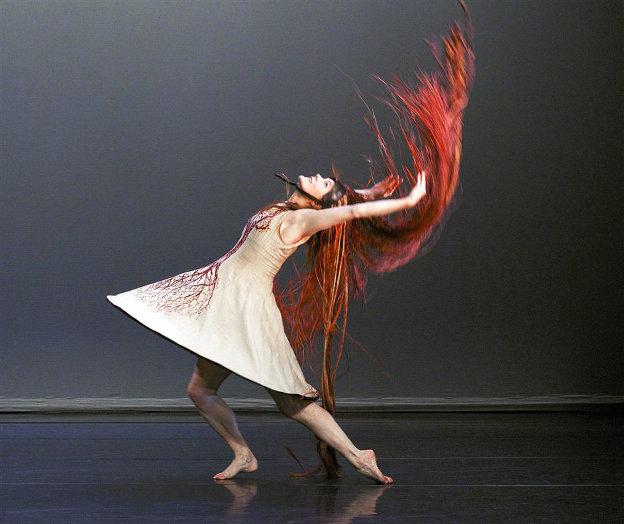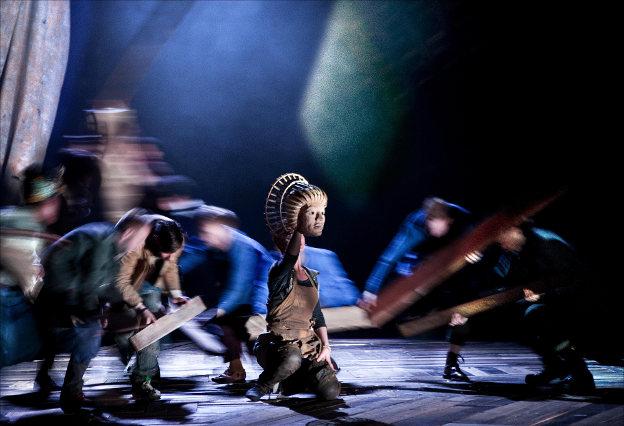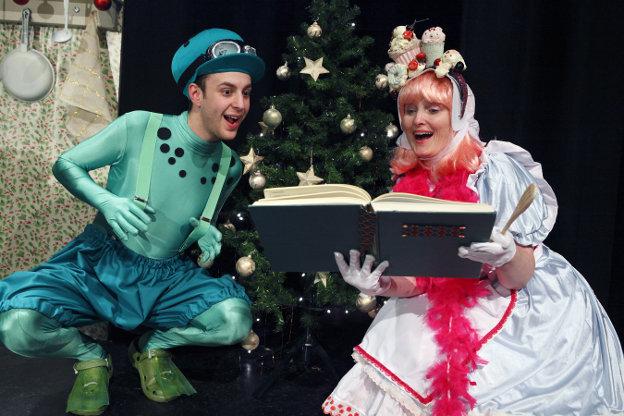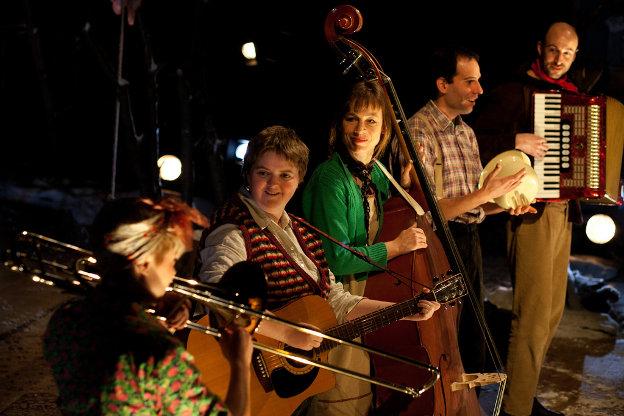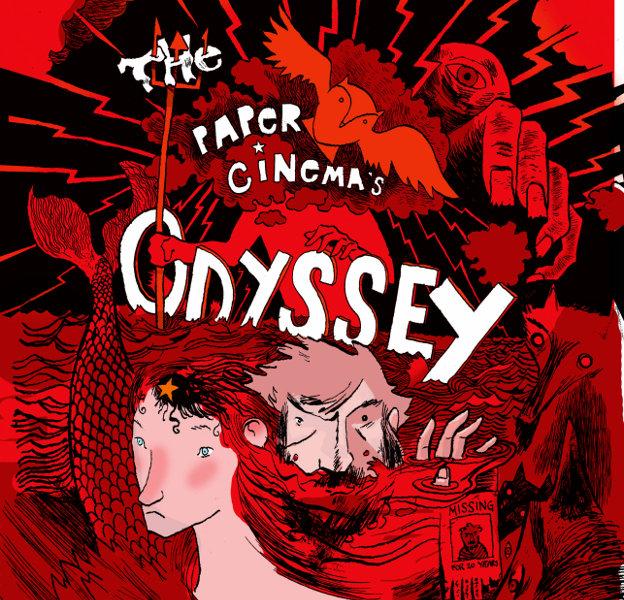In the opening scenes of this show, the stage is full of children and adults happily dancing; brightly lit, laughing, they throw giant red balloons gently to one another and dance gaily around a central maypole, framed by the stylised wrought iron trellis / tree panels that make up the show’s set. It could be the opening to a family musical, but for the fact that the scene has built up from a darker beginning, in which two darkly lit female characters slowly and labouringly produced large egg-timers from underneath hoop-bottomed skirts.Rapunzel, like most popular folktales, sure has its dark side, but while the Brothers Grimm version sees the baby-stealing, tower-emprisoning wicked witch as the centre of the story’s darkness, balletLORENT tease out more complex and emotive themes and run them alongside the traditional Grimm line.
Director and choreographer Liv Lorent, shaping a text by Carol Ann Duffy, is deeply concerned with the theme of motherhood in Rapunzel – a tale in which the female characters figure far more heavily than the male. The childless ‘witch’ is a strong, individual character, but no wicked witch. Shaped by her solitude, she works forcefully but carefully in her beautiful garden. The childless (but expecting) woman who craves the witch’s rampion plant is far more feminine in style and movement. She also has a tendency to behave obsessively, hormonally, hysterically. Fast forward twelve years and it’s the ‘witch’ behaving hysterically when she claps Rapunzel into a doorless tower to stop her from growing up and leaving home. There’s an evocative scene in which the queen, whose son has disappeared after falling in love with Rapunzel-in-the-tower, performs a slow and ritualistic dance en pointe, counterpointed by Rapunzel’s natural mother on the other side of the stage. Both bereft mothers wear empty nests on their backs. These sophisticated moments unfortunately give an occasional air of bathos to the rest of the show, for this adult (female) audience member at least – and it’s possible that they would have passed a younger audience member by entirely.
A glance through the programme shows a highly impressive creative team who on paper are at the top of their games across the board. The dancers are generally long-term company members. This translates onto the stage as a stylised, deliberate, heavily crafted show, rich with imagery and symbolism, that’s a feast for the eyes and ears. The dance is interesting and expressive – and the dancers are good and play their parts well – but it feels as though the creation, the craft, the concept, were the company’s priority rather than the output, the dance. That is an observation rather than a criticism – and parts of the creation are excellent, including Malcolm Rippeth’s lighting, Phil Eddolls’s set and Murray Gold’s music. There’s also an interesting education programme alongside the show, which has allowed over 700 young people to take part in workshops – and a talented and well-directed young cast of local dancers fill certain scenes in a way that really adds to the show’s appeal for a young audience.
This is a show full of character and individuality that is bound to speak to different audience members in different ways. There’s certainly a disparity between the emphasis placed on the ‘mother’ theme versus other narrative elements, which can undermine the drama, but on the whole it’s an ambitious and good quality dance-theatre production that looks and sounds beautiful.

